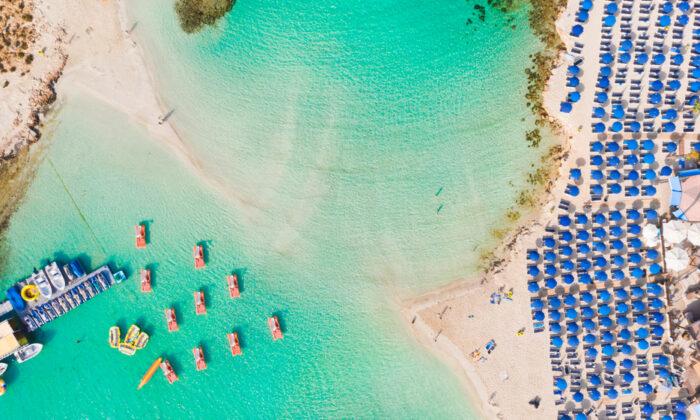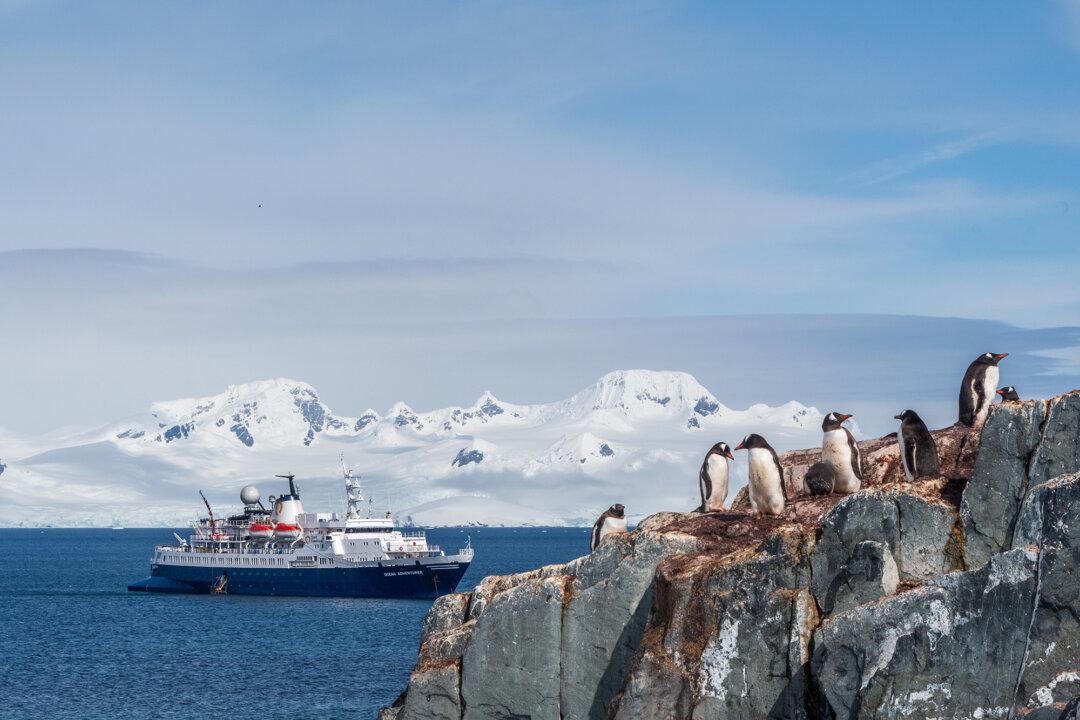Once, the Green Line was something a no-go zone, never to be traversed. Stretching clear across the island, it divides Cyprus, and demarcates two different worlds. Reinforced by walls, fences, barbed wire, and guard towers, this demilitarized zone completely sealed off north from south for some three decades, until 2003.

The Last Divided Capital
And there’s no place where its presence remains so tangible as Nicosia. An ancient landlocked city that’s been continuously occupied for more than 4,000 years, Nicosia, named in Greek mythology for a siren, remains that last divided capital on earth. Arriving here in the middle of town, you’ll notice a couple of things right away. First, the United Nations peacekeepers, still here and very visible on the streets in their green fatigues and blue berets, enforcing a truce made in Geneva way back in 1974.The Green Line itself, a couple of blocks frozen in time, feels a little like the Berlin Wall. Still wearing the scars of battle, the zone runs right through the city. Approaching on foot, my heart quickens just a little at the sight of those barricades. Graffiti-tagged walls. Barrels, stacked up. Neighborhoods divided mid-block. A (mostly) unrecognized country, just over there, on the other side.
Located in the eastern reaches of the Mediterranean Sea, to travelers, Cyprus is well-known for its beaches. From hidden coves filled with clear, clean, blue water, to broad crescents of white sand lined with chairs and umbrellas, sun-starved tourists arrive here from northern Europe (and beyond) in masses. But this island has a long, complex history often left unexplored by visitors, plus a more recent, fractious one that’s firmed up the cultural divide on this island. On any vacation here, it’s well worth taking a deep dive into both.

Larnaca
Most trips will begin at Larnaca, home to the Republic of Cyprus’s major international gateway. Not far away, along the southern coast of the island, archaeologists have unearthed the oldest evidence of human life here—artifacts dating back 12,000 years, probably left by hunter-gatherers who sailed in then moved on. The remains of permanent settlement here are a little more recent, about 9,000 years old.Located along the major trade routes of the ancient world, connections with Crete, Egypt, and the Levant began in the early phases of the Bronze Age. Greeks established six kingdoms here in the first century B.C., alongside a colony of Phoenicians. Empires followed, Assyrian, Persian, Roman, Hellenistic, Byzantine, Ottoman, British. The island is included in the biblical chapter of Acts, when the Apostle Paul and Barnabas, the latter a Cypriot, spend time here, preaching to the people and converting the Roman proconsul. Going forward, Christianity became the pervasive faith.
Arriving in Larnaca, everything feels a little familiar, if you’ve ever landed in a European sun destination, from the sprawling, well-stocked duty-free stores, to the high-end boutiques that make the airport a destination in itself for luxury shoppers. The city has a population of a little under 150,000, but feels bigger. High-rise hotels and condos line the coast. At Foinikoudes, the waterfront district, a boardwalk busy with joggers and cyclists and strollers unfolds past marinas, lines of palm trees stretching to the horizon.
“We have our own culture, our own identity,” he says.
The drive takes less than an hour through dry, rolling hills and windswept olive groves.


The Republic of Cyprus
The Republic of Cyprus was created with the London and Zurich Agreements, negotiated in 1959 between Greece, Turkey, and the United Kingdom, leading to the declaration of the new nation on Aug. 16, 1960. But peace wouldn’t follow. In 1963, the deal fell apart, and the island was partitioned into Greek and Turkish regions. A British general took a map of Cyprus and drew a line across it in pencil. The Green Line was established.It would take on new significance in 1974. A failed Greek Cypriot coup brought on the invasion of Turkish forces, a conflict that ushered in U.N. peacekeepers and sealed the Line, making it a closed border, with very few crossings permitted, even in the capital of Nicosia. In 1983, the north declared a new country, the Turkish Republic of Northern Cyprus—a nation recognized, to this day, only by Turkey.
In 2004, the south joined the European Union, and the southern half of Nicosia indeed has a European feel, with pedestrian shopping streets and a first-rate archaeological museum, housing Iron Age pottery and statues of Greek gods and terracotta figurines dating to the seventh century B.C. But while you may be able to squint your eyes and imagine you’re in Athens, or Valetta, if you walk north, you will always encounter the Green Line.

The Green Line
Streets end abruptly in those barricades, sometimes topped with barbed wire. Since 2003, it’s possible to walk between Nicosia and North Nicosia, in Northern Cyprus. Approaching a guardhouse a little reminiscent of Checkpoint Charlie, a small line of people hand over identification and shuffle through, many with shopping bags in hand. I present my passport, and moments later, I’m on the other side.Immediately, everything feels different. The scents are stronger, the smell of roasting walnuts and doner kebabs wafting through, as they do along Istiklal Avenue in Istanbul. Small stalls crowd the streets, collectively forming compact, colorful bazaars. Minarets have been added to the soaring buttresses of a Gothic church, converting it into a mosque, and I stop in, briefly. An eager young man with a handful of brochures approaches and fills me in on the history of the building. I nod along and walk away a few minutes later, pamphlet in hand.
As my suitcase clickity-clacks along the cobblestones, I search through a web of alleyways to find my accommodations, a small, friendly hotel along a quiet street. Strings of laundry hang across the lanes. Kids play kickball in the streets. People smile and give me a thumbs-up, a little surprised, perhaps, to see a tourist on this side of the Line.
Arriving and checking in, my host shows me to a comfortable room just off an open courtyard. Settling down for the evening, I ready myself for the next couple days. I started my day in Europe. Now north of the Line, I will awake tomorrow, ready for some Turkish delights.





